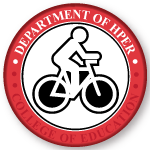Author ORCID Identifier
Park - https://orcid.org/0000-0001-8576-7531
Yadav - https://orcid.org/0000-0001-9728-4561
Document Type
Article
Publication Date
3-15-2022
Publication Title
Journal of Applied Physiology
Volume
132
Issue
3
First Page
874
Last Page
887
Abstract
Prolonged sitting in a mild hypercapnic environment impairs peripheral vascular function. The effects of sitting interruptions using passive or active skeletal muscle contractions are still unclear. Therefore, we sought to examine the vascular effects of brief periods (2 min every half hour) of passive and active lower limb movement to interrupt prolonged sitting with mild hypercapnia in adults. Fourteen healthy adults (24 ± 2 yr) participated in three experimental visits sitting for 2.5 h in a mild hypercapnic environment (CO2 = 1,500 ppm): control (CON, no limb movement), passive lower limb movement (PASS), and active lower limb movement (ACT) during sitting. At all visits, brachial and popliteal artery flow-mediated dilation (FMD), microvascular function, plasmatic levels of nitrate/nitrite and endothelin-1, and heart rate variability were assessed before and after sitting. Brachial and popliteal artery FMDs were reduced in CON and PASS (P < 0.05) but were preserved (P > 0.05) in ACT. Microvascular function was blunted in CON (P < 0.05) but was preserved in PASS and ACT (P > 0.05). In addition, total plasma nitrate/nitrite was preserved in ACT (P > 0.05) but was reduced in CON and PASS (P < 0.05), and endothelin-1 levels were decreased in ACT (P < 0.05). Both passive and active movement induced a greater ratio between the low-frequency and high-frequency bands for heart rate variability (P < 0.05). For the first time, to our knowledge, we found that brief periods of passive leg movement can preserve microvascular function, but that an intervention that elicits larger increases in shear rate, such as low-intensity exercise, is required to fully protect both macrovascular and microvascular function and circulating vasoactive substance balance.
Recommended Citation
Effects of passive and active leg movements to interrupt sitting in mild hypercapnia on cardiovascular function in healthy adults Song-Young Park, TeSean K. Wooden, Elizabeth J. Pekas, Cody P. Anderson, Santosh K. Yadav, Dustin R. Slivka, and Gwenael Layec Journal of Applied Physiology 2022 132:3, 874-887


Comments
This is the accepted manuscript of an article published in the Journal of Applied Physiology on March15, 2022 and can be accessed at https://doi.org/10.1152/japplphysiol.00799.2021